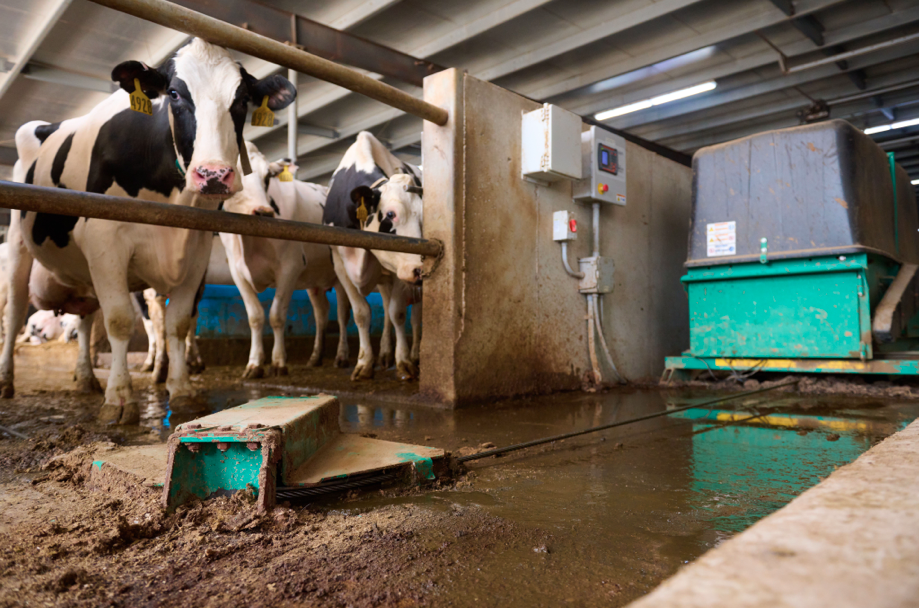Facility Focus: Are Alley Scrapers Right for Your Dairy?

Scraping manure probably isn’t one of your favorite jobs on the farm. It’s repetitive, it’s dirty, and it might be more time consuming than you realize. What if there was a way to automate this task? And what if it could help free up some time in your day while also keeping hard earned dollars in your pocket? Maybe it’s time to invest in an alley scraper system.
Factors to Consider
According to Jeramy Sanford, Global Product Manager for Manure Equipment at GEA, labor reduction is a key benefit when installing alley scrapers. “I have a rule of thumb where I ask a farmer how much time they spend scraping each day,” he says. “An example answer would be ‘I spend about 30 minutes each morning and 30 minutes each night.’ From there I usually ask how much they are paying employees [or themselves] an hour. Let’s say it in the $10-$12 range. When you factor in fuel consumption, a skid loader typically burns about 2 to 3 gallons of fuel an hour plus wear and tear on the machine, so I usually estimate that to cost a minimum of $20 an hour. So, if you’re paying an employee $10 an hour plus $20a day for using the skid loader, that comes out to almost $11,000 a year. Generally, for a farm that is only scraping 1 hour a day you can put in an alley scraper [on a side of a barn] for around $20,000, But at $20,000, that pays for itself pretty easily in four years. And, not to mention, what could you do with that extra hour in your day?”
After doing the math, maybe you’ve realized that an alley scraper could pencil into your budget. But what are some of the other benefits besides labor? Cow cleanliness and comfort.
“Alley scrapers are constantly scraping manure out from under the cows,” Sanford says. “This helps keep the cow cleaner and manure from splashing up onto their udder. Another thing to think about is how often cows are being moved around. With an alley scraper, there is no disturbance to the animal. They don’t even know they’re there.”

While the benefits of investing in an alley scraper are clear, there are a few things to consider before deciding to install.
“Scrapers can be installed on pretty much any size of operation, as well as heifer facilities,” Sanford says, “but the problem you might run into is if the facility has a nontraditional layout. It can still be done, but barns that have been retrofitted into a freestall type facility are typically more of a challenge.”
Though alley scrapers are generally low maintenance, some upkeep is still required.
“To keep everything running smoothly, it’s important to keep up with the maintenance,” Sanford adds. “Greasing corner wheels on a weekly basis, checking cables and taking some time each month to look things over thoroughly is recommended.”
At the end of the day, using an automated alley scraper on your facility is not a necessity. But it could become a tool that could save you time and money while keeping the cows clean and comfortable. And in a competitive dairy market, having these advantages could give your dairy the extra edge to earn more.
For more Facility Focus articles, read:
- Is Overcrowding Holding Your Cows Back?
- Back to the Curtain Management Basics
- The Road to Automated Calf Feeders







